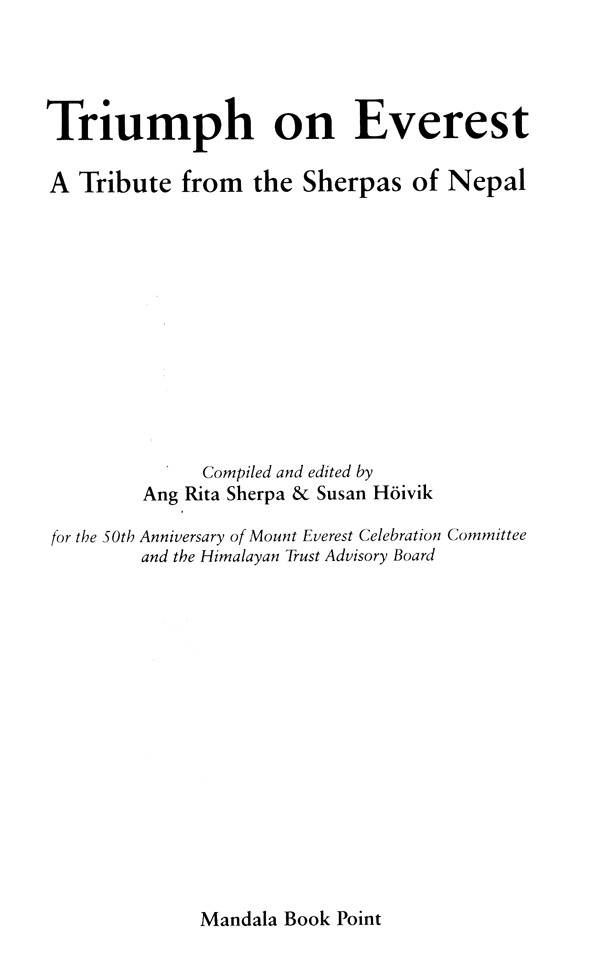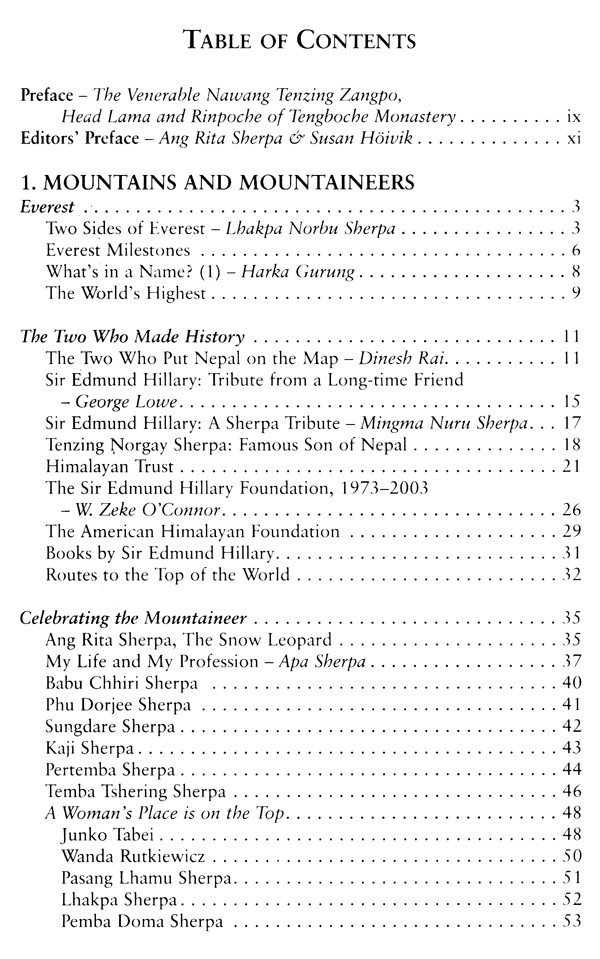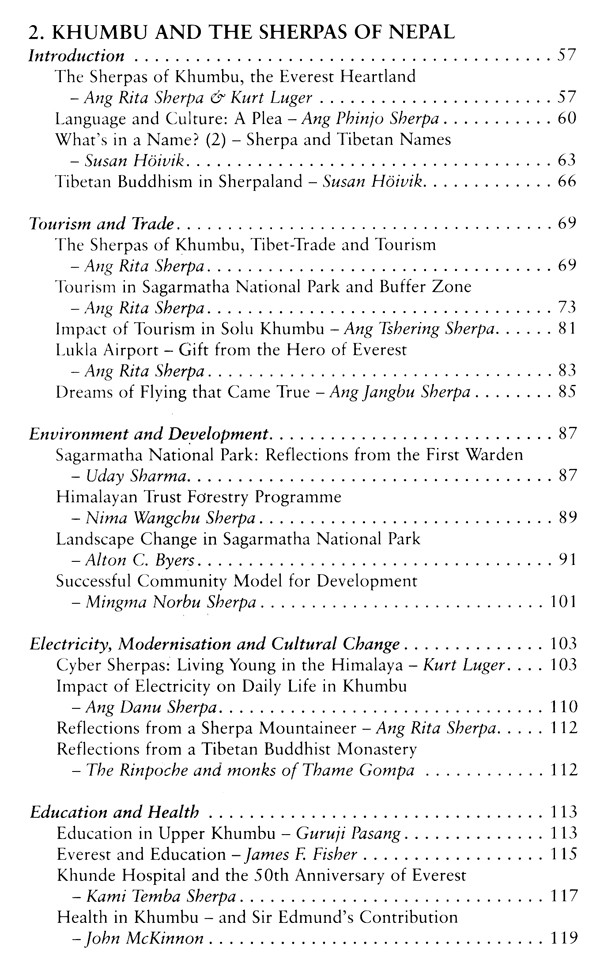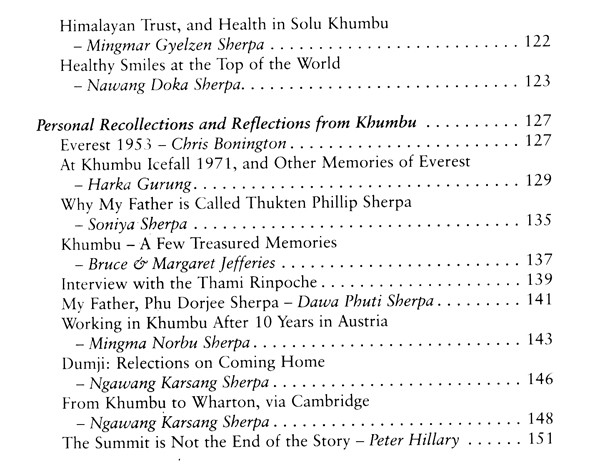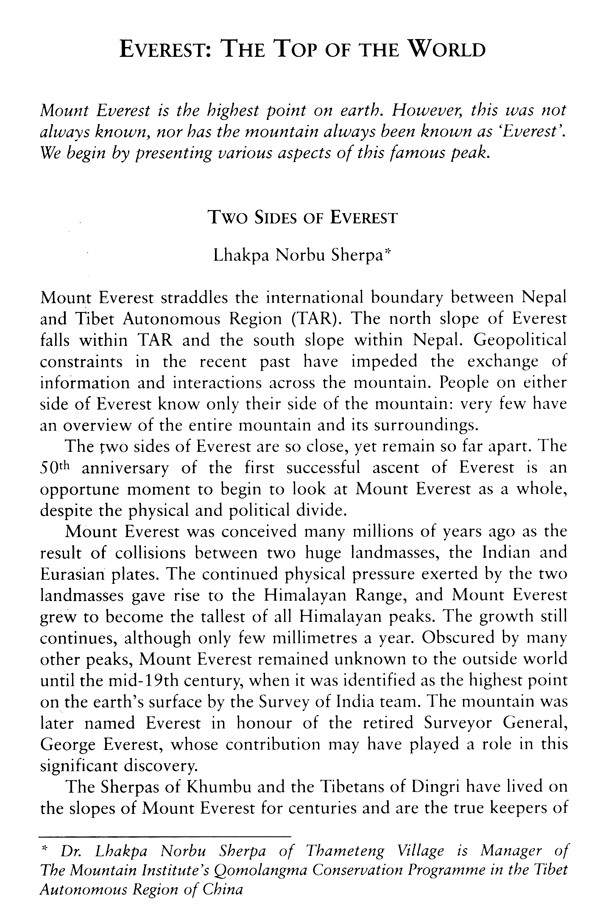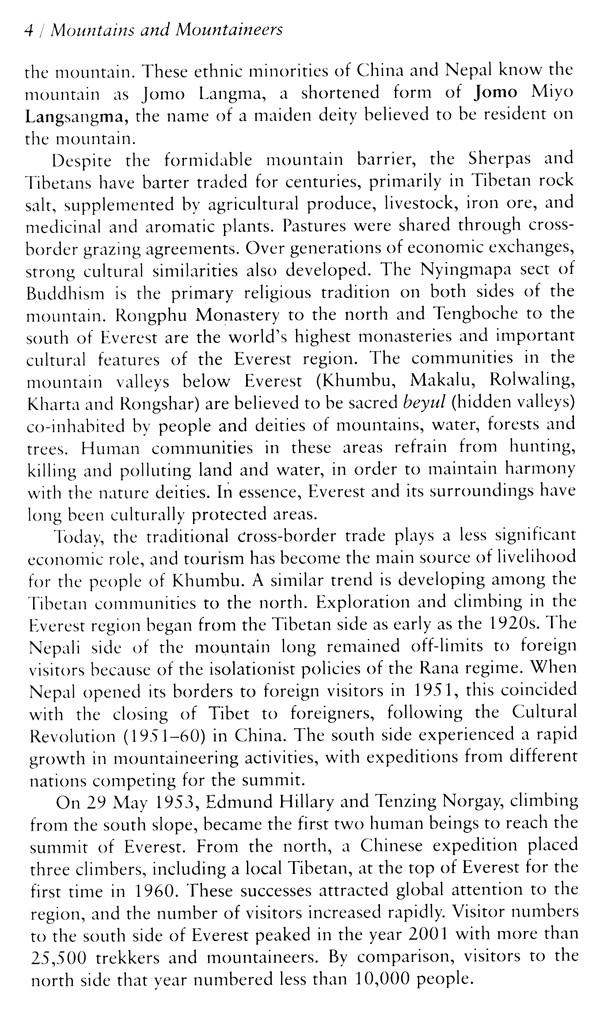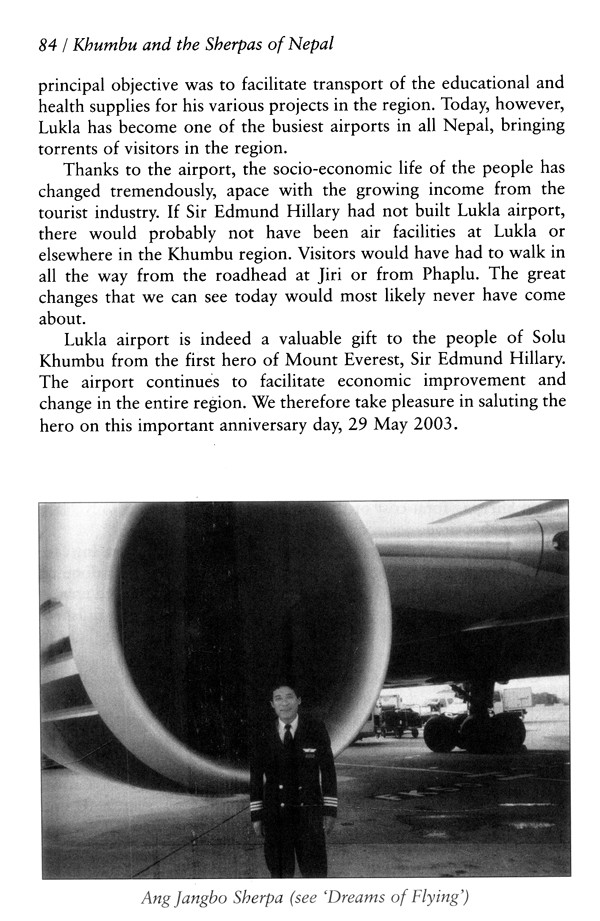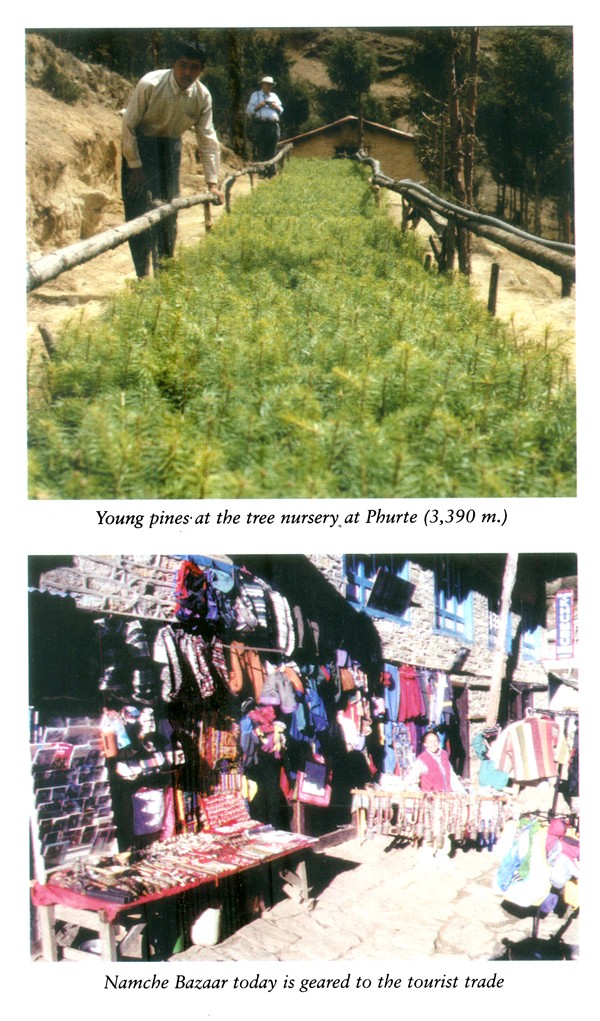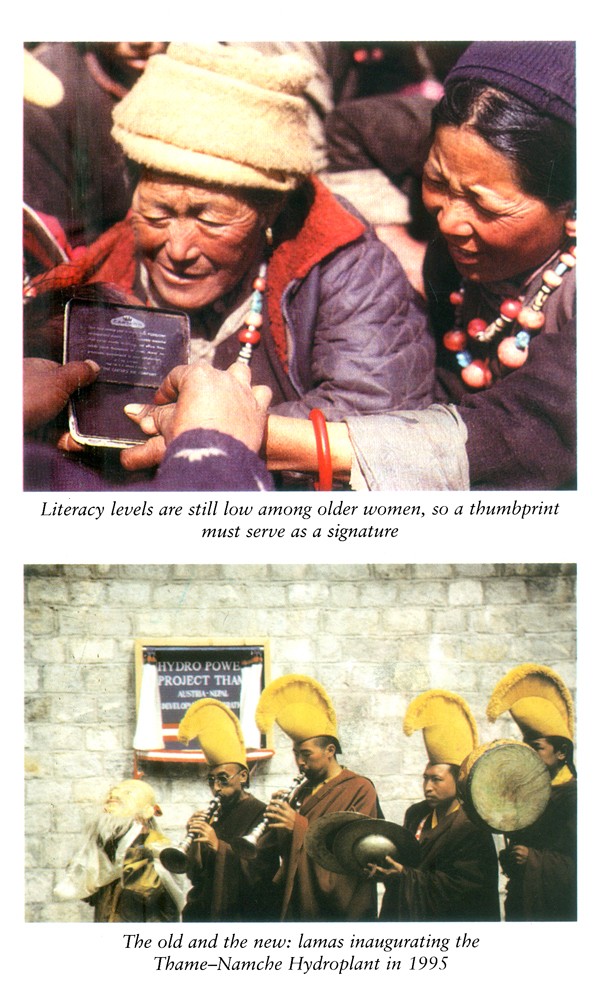
Triumph on Everest- A Tribute from the Sherpas of Nepal
Book Specification
| Item Code: | UAT715 |
| Author: | Ang Rita Sherpa and Susan Hoivik |
| Publisher: | Mandala Book Point, Nepal |
| Language: | English |
| Edition: | 2003 |
| ISBN: | 9789993310228 |
| Pages: | 162 (Throughout B/w and Color Illustrations) |
| Cover: | PAPERBACK |
| Other Details | 8.50 X 5.50 inch |
| Weight | 280 gm |
Book Description
Current programs include the Qomolangma Conservation Project conserving the north side of Mt. Everest in the Tibet Autonomous Region of China, the USAID Funded project in Eastern Nepal, the Kanchenjunga Conservation Activities funded by the MacArthur Foundation; and PEAK enterprise programmes in the Tibet Autonomous Region. All these focus on improving local communities abilities to strengthen their livelihoods while preserving the long term health of ecosystems.
ECO HIMAL: DEVELOPMENT CO-OPERATION ALPS-HIMALAYA Eco Himal, the Society for Ecological Co-operation Alps-Himalaya, a non-profit INGO, has been working with local grass-roots organisations in the Himalayas stice 1992. In line with the principles of Austrian Development Co-operation, its projects aim at generating income and bringing long-term benefits to the lives of the local population, in an environmentally sustainable manner.
Its activities in and around the Everest area include the 620 kW Hydropower Plant Thame-Namche, with the Drinking Water and Sewage System in Namche Bazaar; the Mountaineering School Thame; the Rolwaling Eco Tourism Project; CD recordings of Sherpa music; and the Integrated Rural Development Project in Makalu-Barun National Park and Buffer Zone. Together with a Tibetan partner organisation, Eco Himal also conducts projects in remote areas of Tibet. The work of Eco Himal is financed through the Austrian Ministry of Foreign Affairs, with additional support from private donors.
It was not only mountaineering that was transformed by the events of that day. The Sherpa people and their Himalayan heartland of Solu Khumbu in Nepal became the focus of global attention. Their world would never be the same again either.
With climbing expeditions and trekkers flowing into the Everest region, changes were inevitable - both positive and negative. It is largely thanks to the vision and devotion of one man, Sir Edmund Hillary, that so-many-positive transformations have been possible in health and education, environment and conservation.
To celebrate the 50th anniversary of the triumph of Mount Everest, the Himalayan Trust Advisory Committee takes pride in presenting this volume, a tribute to Sir Edmund Hillary from the Sherpa people of Nepal. Compiled and edited at The Mountain Institute and Eco Himal, it provides a broad picture of Everest and its mountaineers but also of the Everest region and the lives and experiences of its people over the past 50 years.
In 2000 he completed his Masters Degree in Protected Landscape Management from the University of Wales, UK, by distance learning. He has also served as volunteer with the US National Parks Service, in Yellowstone Grand Tetón and other parks.
Susan Hoivik Susan Hoivik holds degrees from Columbia University, New York; Leeds University, UK; and the University of Oslo, Norway. With work experience from Norway, Mexico and Tanzania, she has devoted much of the past decade to living and working in Nepal - as trekker, teacher, anthropologist, practising Buddhist, environmental volunteer, and VSO teacher-trainer in Far Western Nepal and with Eco Himal's Rolwaling Eco Tourism Project.
The author/co-editor of four books on Nepal, she divides her time between Eco Himal in Nepal and her work in editing, translation and adult education in Norway, where she lives in a small log cabin in the woods.
My association with Sir Edmund Hillary dates back to 1961, when I was asked to join him in inaugurating the first Hillary school in Khumjung. Since that time, we have seen many changes in the Sherpa communities of the Solu Khumbu region of Nepal. Hillary's holistic, grass-roots approach has helped to pave the way for maintaining a healthy cultural and natural heritage in our homeland.
Sir Edmund Hillary's humanitarian support has brought positive changes, through education and health-care services. His vision, kindness and dedication have directly served the upliftment of the people of Solu Khumbu, as well as inspiring other charitable agencies. The founding of the Himalayan Trust has enabled continued support for building schools, bridges, hospitals, tree plantations, and restoring cultural sites. Sir Edmund was instrumental in personally supporting and encouraging others to help rebuild Tengboche Monastery, which burnt to the ground in 1989.
We are proud that Sir Edmund has chosen to celebrate the golden jubilee of Everest amidst the Sherpa people of Nepal despite other important engagements. On this auspicious occasion, we would like to express our deep appreciation for all that he has done for the people of Nepal. We are offering a special prayer, to wish there can be peace and happiness for all, that our benefactor Sir Edmund and his family will enjoy a long, healthy and prosperous life and that we will be able to celebrate together many further achievements.
**Contents and Sample Pages**
